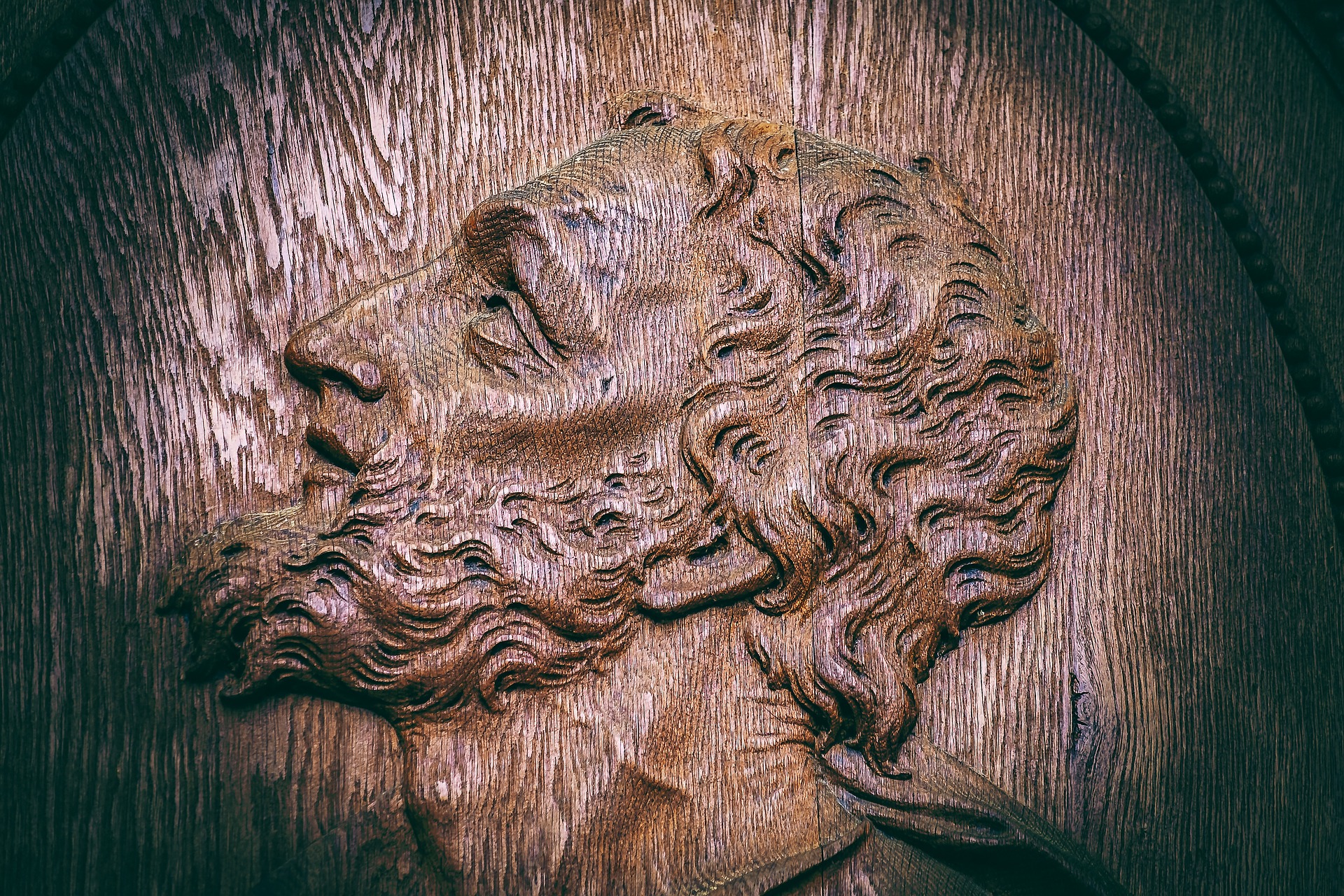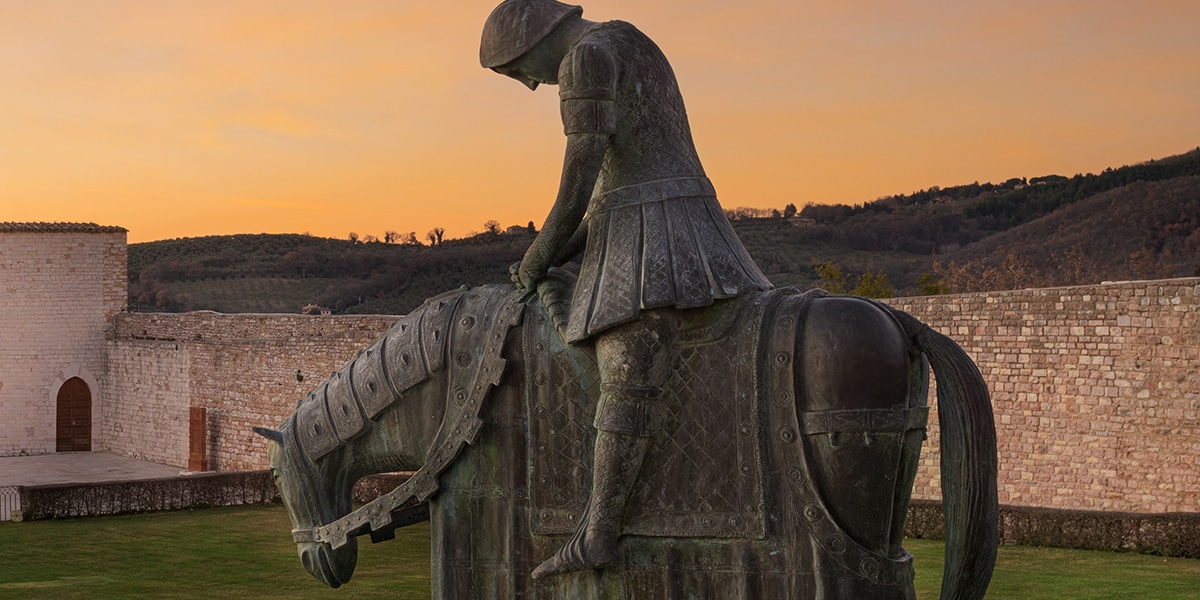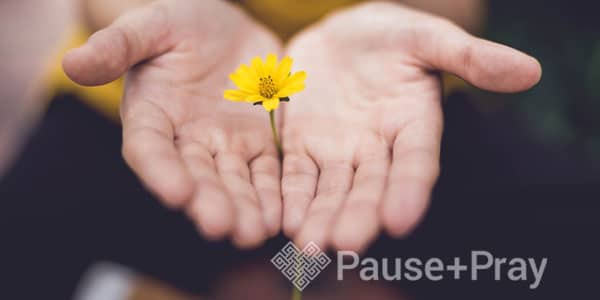There is nothing more fundamental to the Christian faith than the belief that God heals. Whether it is through the grace of conversion, the soothing of grief or even the deliverance from death through resurrection, Christians have always placed their faith in a God who, through Jesus, has compassion on his people and works to bring them healing and wholeness.
The Gospel of Mark, which we will be hearing on Sundays this year, is full of stories about Jesus healing people. He gives sight to the blind and hearing to the deaf. He casts out demons that torment innocent children. He heals a woman with a hemorrhage and a man from his paralysis. In all, Mark features more than a dozen of these “mighty deeds” of Jesus—about one fourth of his Gospel is about them.
That such stories should fill so much space in the shortest of the four Gospels can only mean that Mark considered them very significant. This may seem obvious. Clearly, we might say, they are important because they demonstrate that Jesus is the Messiah who has power to heal and cast out demons. It’s true—this is part of the reason Mark includes such stories in his Gospel. But if that were the whole point of the stories, one or two of them would undoubtedly have sufficed to make it. So, why are there so many mighty deeds in Mark? What do they mean—for him and for us?
What Is a ‘Mighty Deed’?
We should begin by considering how the people of Jesus’ time understood what was happening when Jesus healed diseases. Today, we understand the natural world to operate according to impersonal forces or “laws of nature.” When someone experiences healing that cannot be explained according to our understanding of these laws, we might call it a miracle, understood to be God’s “interfering” somehow with the laws of nature.
People at the time of Jesus didn’t conceive of the world in terms of impersonal laws. Rather, it was the will and purpose of God that supported and guaranteed the normal functioning of the world. Divine power was always at work, keeping things moving according to the divine wisdom. The extraordinary—such as a sudden or unexpected healing—was considered a particular eruption of this always-present divine power rather than an interruption of the working of the cosmic machinery. Because of this, the word miracle as we use it today does not really reflect all that well how ancient people understood the extraordinary.
The Gospel of Mark often refers to such actions by Jesus as “mighty deeds.” This is a good term for us to use here because it helps us focus on the source and meaning of the act rather than on the mechanism behind it. When Mark assembled his Gospel from the many traditions about Jesus healing people and exorcising demons, he did not simply string them together haphazardly. Instead, he arranged and told them so that they would help him express who Jesus is, what he came to do and what all this means for disciples of Jesus.
When we hear these stories about Jesus today, we can learn much by attending to some of the larger messages being presented through the stories. To give an idea of how we might do this, we can look at three particular stories: the first exorcism that Jesus performs and two stories about giving sight to the blind.
The First Exorcism
Immediately after his baptism and trial in the wilderness, Jesus proclaims, “This is the time of fulfillment. The kingdom of God is at hand” (1:15). His first mighty deed occurs shortly after, while he is teaching (1:21-28).
Mark tells us that “the people were astonished at his teaching, for he taught them as one having authority and not as the scribes.” Suddenly, an unclean spirit who has possessed a man cries out, “What have you to do with us, Jesus of Nazareth? Have you come to destroy us? I know who you are—the Holy One of God!” Jesus orders the spirit to be quiet and come out of the man. At this, the people wonder, “What is this? A new teaching with authority. He commands even the unclean spirits and they obey him.”
Here, at the beginning of the Gospel, we discover the significance of the entire mission of Jesus. His advent and the “time of fulfillment” are nothing less than the overcoming by God of the evil forces at work in the world. This is not just a confrontation between one unclean spirit and Jesus. The spirit knows that Jesus has come to destroy “us”: all of Satan’s forces. Jesus has come to interfere with the havoc that the evil powers wreak in the world—sickness, possession, sin, death.
What God is doing in all of creation is enacted in the life of this one man, whose healing is a manifestation of what God’s Reign is all about. Mark wants us to understand everything else in his Gospel—all the other exorcisms and healings and, eventually, Jesus’ death and resurrection—as manifestations of this great battle that God is waging and winning against his cosmic enemies.
This story is also concerned with the question of Jesus’ “authority.” The people recognize this unique authority right away, and they are amazed by it. At the end of the story, after the exorcism, they once again express astonishment at this “new teaching with authority.”
That a story whose main attraction appears to be an exorcism begins and ends with mention of Jesus’ teaching authority tells us that the two are intimately connected. What is “new” in the teaching of Jesus is that it is accompanied by a sign that confirms it—the Kingdom of God is at hand, and you can see it for yourself.
When the scribes teach, they talk about God; when Jesus teaches, he brings about God’s
Reign. This is because the authority Jesus exerts is God’s authority, God’s right to rule his creation, which he is now exercising through his Holy One.
For Mark, the teaching of Jesus is not simply words about the Kingdom of God; it is the power of God himself, acting on their behalf. It is the victory of God’s Reign—the good news—in word and fact.
What this story makes clear in very concrete, vivid terms is that, in Jesus, God is actively fighting evil, whose ultimate destruction is already ensured. The other stories of exorcisms and healings in Mark, whatever lesson they may hold in themselves, also participate in the meaning of this first story.
Healing the Blind
Mark wants his readers to understand the mighty deeds of Jesus as an expression of God’s victory over the forces of evil that bind and torment humanity. It is part of God’s overall plan to heal creation where it has gone awry, to restore it to its intended wholeness and harmony. Sickness, too, was considered a disorder in God’s creation.
On the basis of such texts as Isaiah 35:5-6, Jewish tradition expected that the coming of the Messiah would be accompanied by healings of every sort of human infirmity: “Then will the eyes of the blind be opened, the ears of the deaf be cleared; Then will the lame leap like a stag, then the tongue of the dumb will sing.”
But there was always the danger that the crowds would be distracted, as it were, by the mighty deeds of Jesus and fail to understand the true demands of Jesus’ mission, for him and for his followers. Too much concentration on God’s triumphs can lead to a triumphalism that does not recognize the sacrifice required to achieve them. Mark works very hard to make it clear that the mighty deeds of Jesus can only be properly understood when seen from the perspective of the cross: God’s victory over evil comes at a tremendous cost.
Mark dramatizes how difficult it can be for Christian disciples to truly understand how much of a shadow the cross casts over the mission of Jesus. The disciples are consistently portrayed as well-intentioned but slow, never really comprehending the meaning of what Jesus says and does.
This is especially true when Jesus begins to talk about death, beginning in the second half of the Gospel. Here, the journey to Jerusalem and the cross begins, and Jesus begins to teach his disciples who he really is and who they are expected to be.
The story of the journey to Jerusalem places great emphasis on two main things—Jesus’ predictions of his passion and his teachings on discipleship—making it clear that the two are connected. To be a disciple, we must be willing to follow Christ to the cross (8:34).
To help his readers appreciate the relationship between the journey of Jesus to the cross and the journey of discipleship, Mark brackets this section with two accounts of Jesus healing a blind man, placing them so that they become symbolic of the relationship between the healing power of God, the cross of Christ and the call to discipleship.
Coming to ‘See’ Our Discipleship
The first story is the healing of the blind man in Bethsaida (8:22-26). As Jesus turns toward Jerusalem, the people of Bethsaida bring him a blind man and ask Jesus “to touch him.” Jesus performs a rather strange ritual of putting spittle on the man’s eyes and then laying hands on him. When Jesus asks the man if he sees anything, the man says that he sees “people looking like trees and walking.” In other words, he has gained some of his sight, but it is imperfect and hazy. Jesus lays hands on him a second time and his sight is restored completely: “He could see everything distinctly.”
There are a number of intriguing features in this story, but the one most relevant here is the fact that the man only gains his sight gradually. Mark presents the event in such a way that we see in the man’s healing a symbol of discipleship.
Sight, in the Bible, is often a metaphor for understanding and accepting the ways and will of God. The blind man of Bethsaida stands for all of us who would be disciples, but who only come to understand what this really means gradually. The story is not really about Jesus having to “try again” to heal the man. It is about coming to “see” our discipleship in fits and starts, gaining at first only the bare outlines and fuzziest comprehension of what following Christ means. It is only through the ongoing, healing ministration of Jesus himself that we can “see distinctly” what we are called to be in the world. And this can only happen when we understand the cross of Christ as our cross, too. It is fitting, then, that this story comes at the very beginning of the journey to Jerusalem.
At the end of the journey, Jesus heals another blind man (10:46-52). Jesus and his followers are leaving Jericho, which is just a few miles east of Jerusalem. As they depart, Bartimaeus, a blind man begging on the side of the road, calls out, “Jesus, son of David, have pity on me.”
When Jesus tells the people to bring the blind man to him, Bartimaeus throws aside his cloak, leaps up and comes to Jesus, who asks him, “What do you want me to do for you?” Bartimaeus replies that he wants to see. Without touching him, Jesus says to him, “Go your way; your faith has saved you.” And immediately, the blind man gains his sight and follows Jesus on his way to Jerusalem.
In this story, we have another symbolic expression of discipleship, but now the context and the results present us with a new lesson. It occurs at the end of the journey to Jerusalem, during which Jesus has repeatedly instructed his disciples about the cost of his own mission and the demands of their discipleship.
Now, Mark shows symbolically what discipleship looks like when one has fully learned these lessons. It is characterized by crystal-clear sight: Bartimaeus gains his sight completely and instantly, even without the need to be touched. His approach to Jesus has been one of faith, a strong conviction that Jesus can and will “have pity” on him. When the followers of Jesus (we can see here a symbol of the faith community) tell him to “take courage; get up, he is calling you” (the call to discipleship), he throws off his cloak and runs to Jesus. His response is immediate and confident; he knows Jesus will heal him.
For Mark, this can only happen at the end of the journey, as it were, to the cross. Only a disciple who fully understands what sort of messiah Jesus is can possess such a mature faith. Significantly, we are told that Bartimaeus follows Jesus “on the way.” Bartimaeus, who represents the completely “enlightened” follower, goes with Jesus to Jerusalem, symbolically following him to the cross.
All of the healing stories in Mark express not only the facts of the healings, but also the larger messages that Mark wishes to express through them. Reading them with an appreciation of this can deepen our understanding of the Gospel of Jesus and our own call to follow him.
So What about Us?
How might we gain a deeper understanding of Mark’s words? I would like to make three suggestions. First, we should concentrate on the meaning Mark ascribes to the mighty deeds of Jesus. Healing is a fundamental aspect of God’s Reign. In Jesus, God was fulfilling the promises he had made so long before to restore all of creation.
Second, these stories challenge us to open our eyes to the way Jesus continues to work in the world. Addiction, cruelty, suffering of all kinds—and apathy toward it—are some of the forms that evil takes in our world today, and people have been freed from them. Can we recognize in our own lives, or in the lives of others, how God has confronted these evils and conquered them? Can we, to use the words of the author Mary Catherine Hilkert, O.P., “name grace” in our world? More importantly, can we give hope to those who still suffer by proclaiming what God has already done for others?
Third, we are obliged to see Jesus’ mighty deeds from the perspective of the cross, itself a manifestation of evil. It is true that through Jesus, God has struck the fatal blow to evil. In the end, God’s Reign will be completely triumphant, but not yet. For the time being, the cross must still be borne in every generation by every follower of Jesus.
These stories challenge us not only to “name grace,” but to “name evil” as well. In what ways does evil still wreak havoc in our world, our communities, our own lives? As followers of Jesus, do we have the love it takes to confront that evil, as Jesus did on the cross? Do we have faith that if we risk confronting evil, Jesus will be with us? Do we dare hope that taking up the cross by naming and challenging evil can bring healing?
If we are not yet able to do all this, then at least we can cry out to Jesus, like the father of a boy with a demon (9:22), “Have compassion on us and help us!”








